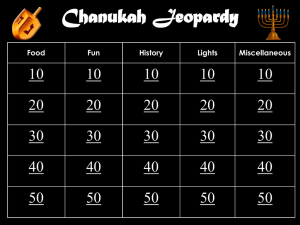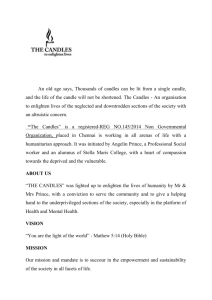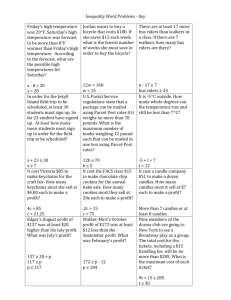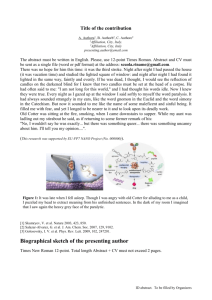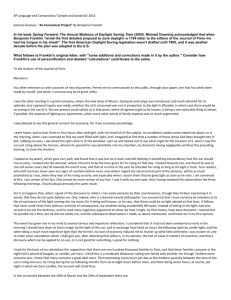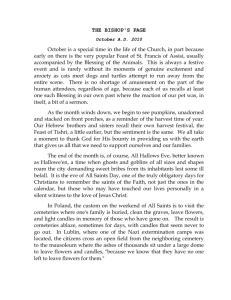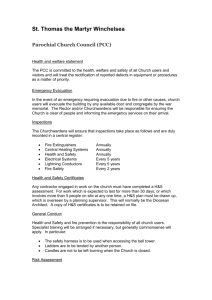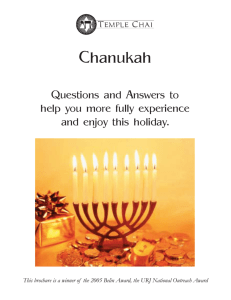The law of “publicizing the miracle” (pirsumei nisa) is unique to
advertisement
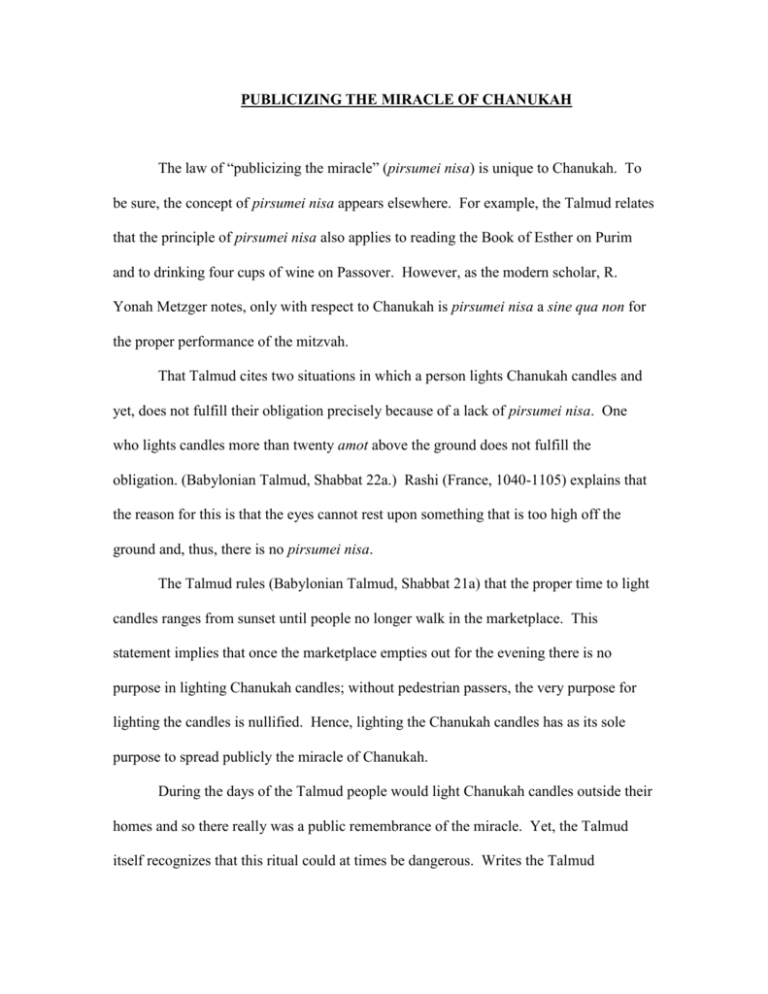
PUBLICIZING THE MIRACLE OF CHANUKAH The law of “publicizing the miracle” (pirsumei nisa) is unique to Chanukah. To be sure, the concept of pirsumei nisa appears elsewhere. For example, the Talmud relates that the principle of pirsumei nisa also applies to reading the Book of Esther on Purim and to drinking four cups of wine on Passover. However, as the modern scholar, R. Yonah Metzger notes, only with respect to Chanukah is pirsumei nisa a sine qua non for the proper performance of the mitzvah. That Talmud cites two situations in which a person lights Chanukah candles and yet, does not fulfill their obligation precisely because of a lack of pirsumei nisa. One who lights candles more than twenty amot above the ground does not fulfill the obligation. (Babylonian Talmud, Shabbat 22a.) Rashi (France, 1040-1105) explains that the reason for this is that the eyes cannot rest upon something that is too high off the ground and, thus, there is no pirsumei nisa. The Talmud rules (Babylonian Talmud, Shabbat 21a) that the proper time to light candles ranges from sunset until people no longer walk in the marketplace. This statement implies that once the marketplace empties out for the evening there is no purpose in lighting Chanukah candles; without pedestrian passers, the very purpose for lighting the candles is nullified. Hence, lighting the Chanukah candles has as its sole purpose to spread publicly the miracle of Chanukah. During the days of the Talmud people would light Chanukah candles outside their homes and so there really was a public remembrance of the miracle. Yet, the Talmud itself recognizes that this ritual could at times be dangerous. Writes the Talmud (Shabbat, 24b): “In a time of danger, one puts [a candle] on the table, and that is sufficient.” This statement raises some questions. Does it imply that one fulfills the obligation in a time of danger simply by lighting a candle inside the house or does it mean that in a time of danger one is exempt from fulfilling the obligation to light Chanukah candles? Different cultures addressed this question in a way that reflects their own unique environment. In northern Europe during the medieval period, when it grew dangerous to publicly display the Jewish faith, people started lighting the Chanukah candles inside their own homes. Consequently, the great French scholar, R. Isaac of Dampierre (13thc.), writes that the concept of pirsumei nisa shifted away from reaching the public at large and now focused on enlightening the members of the household. This development caused a reexamination of the Talmud’s central teaching. No longer was the time for lighting Chanukah candles contingent upon people being in the marketplace. In the medieval era the most significant criteria was that people in the house witness the lit candles. Thus, the concept of pirsumei nisa evolved from a public display into a family based educational model. In contrast, in medieval Egypt, where the Jews were freer to practice their religion in public, Maimonides’ (1138-1205) ruling contrasts with that of R. Isaac of Dampierre. Maimonides strictly follows the formulation of the Talmud that one may light candles only until the marketplace empties out for the evening. Thus, according to Maimonides, if one delays lighting until very late in the evening, then one can no longer light Chanukah candles that night. Maimonides does not accept the fact that pirsumei nisa can apply to the members of the household—pirsumei nisa only applies with respect to the general public. Later authorities allow for the more expansive understanding of R. Isaac of Dampierre. In the sixteenth century, R. Joseph Caro and R. Moses Isserles both rule (Orah Hayyim, 672: 2) that ideally one should light candles during the time period that ranges from sunset until the closing of the marketplace. However, both also allow one to fulfill the obligation by lighting later on in the evening in front of members of the household. Subsequent commentators, like R. Avraham Gombiner, note that if everyone in a house is asleep one does not fulfill the obligation to light Chanukah candles. Similarly, the Mishnah Berurah suggests that one should awaken the sleeping members of the household in order to fulfill the mitzvah of lighting Chanukah candles. This brief discussion gives us a richer understanding of pirsumei nisa. How is it possible that this concept which in the texts of the Talmud applies only to the general public morphs in later authorities into a concept that applies predominantly to members of one’s private household? Aside from the historical reason that it was not always physically safe to light candles outside the home there is an educational message as well. The rabbis are stating that everything we do in the public sphere also has as its goal the education of the personal family. As much as we are proclaiming the miracle of Chanukah to the world, another purpose of this proclamation is to emphasize the greatness of this miracle to our own family members. Thus, Pirsumei nisa is both a public and private declaration. And, perhaps more importantly, the history of the concept of pirsumei nisa demonstrates that all public displays of our religion should have as a primary focus the education of our own family.

